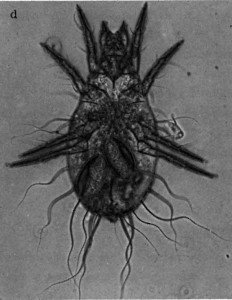
Only a fraction of the thousand species in Northern Europe can form larger populations in food. Mite populations can develop rapidly. This can result in the strange phenomenon we call “living dust”. It is made up of large quantities of larvae and nymphs, which, due to lack of food and space, migrates out of the food.
The mites that are in food are almost all related to degradation of the food caused by bacteria and fungi. None of the mites can live and multiply when the environment is too dry for microbial life trajectory. It is always too dry at a water activity below 0.62, corresponding to a relative humidity no higher than 62%. At lower humidity, mites die and the growth of the microorganisms they feed on, stops. It is also this fact that is mainly used in the prevention and control of pests. Pest control through poison is possible but difficult because several of the species that are in foods, may form special phases – called hypopus or deutonymph – which are more resistant to dehydration, starvation and insecticides than other phases of development.
The various species of mites can only be determined on the basis of microscopic preparations which are easy to make, but the mites are quite difficult to determine. As a general rule, it is predictable that a visible amount of mites in exports hardly is tolerable in the import country.
Within the EU, cereal intervention quality is defined by certain quality requirements which demand that the grain must be free from living pests, including mites at any stage of development.




